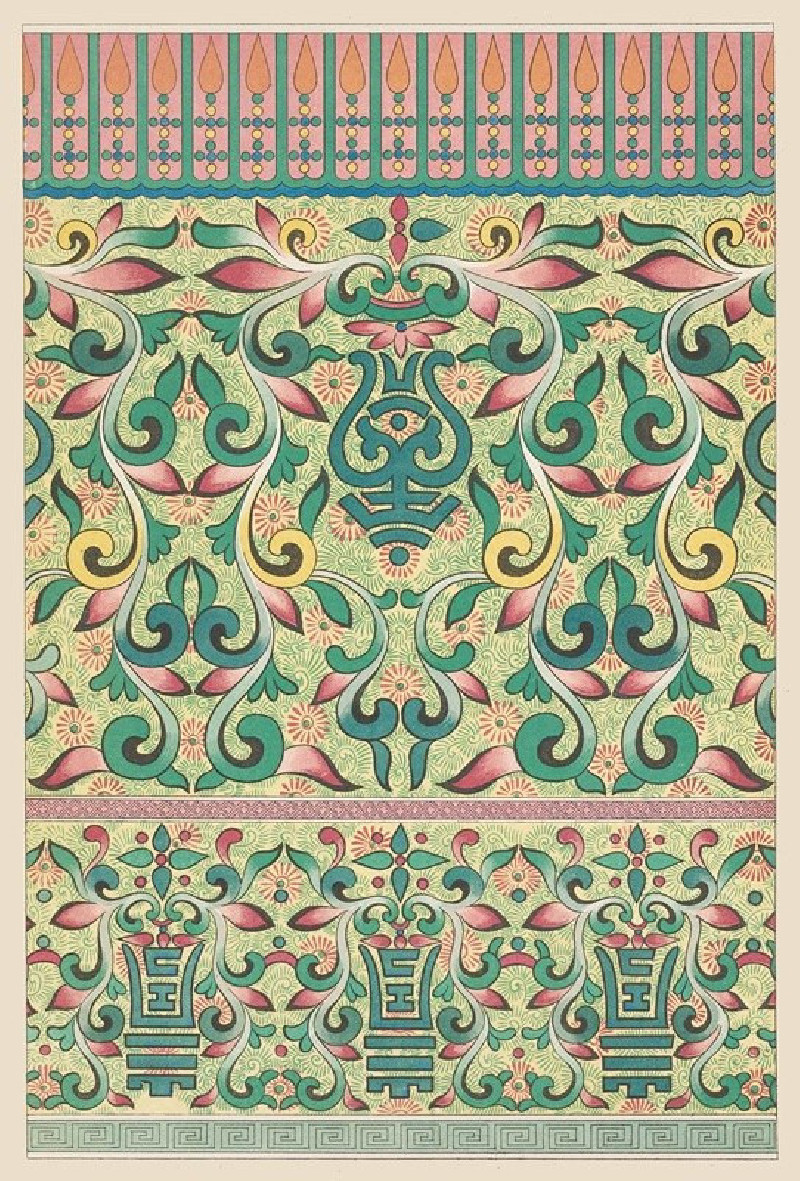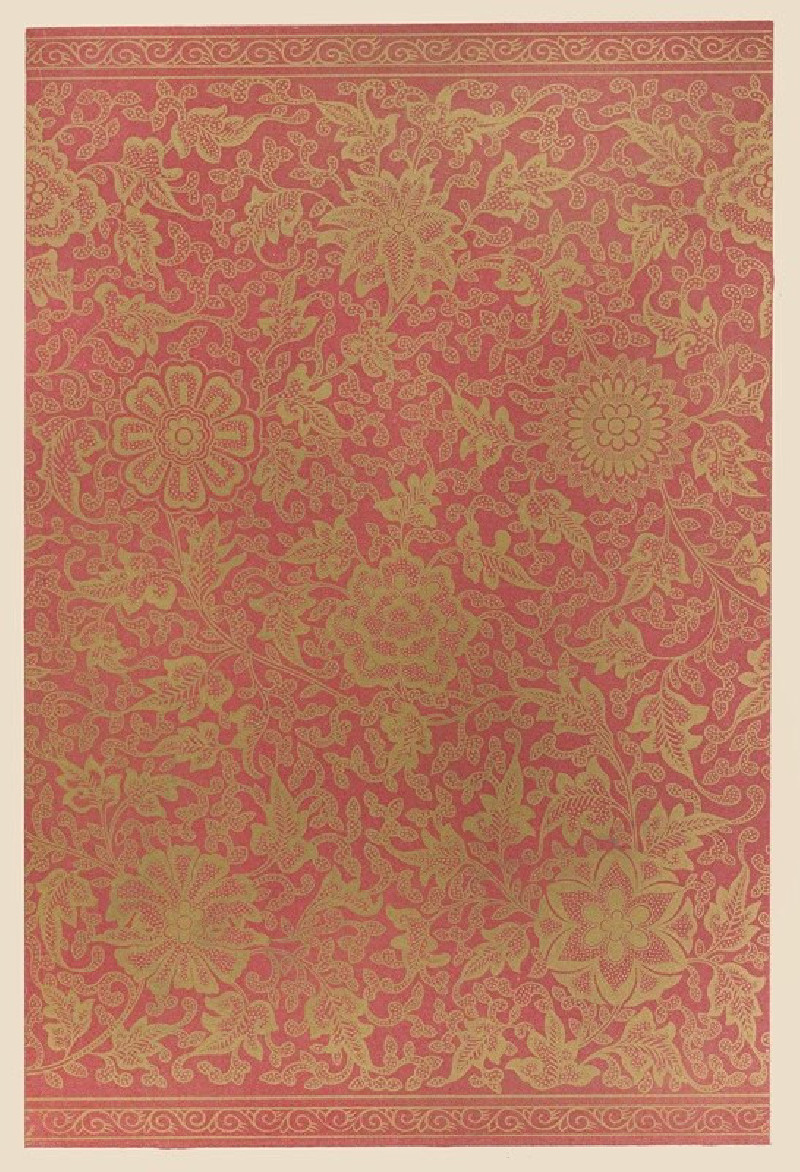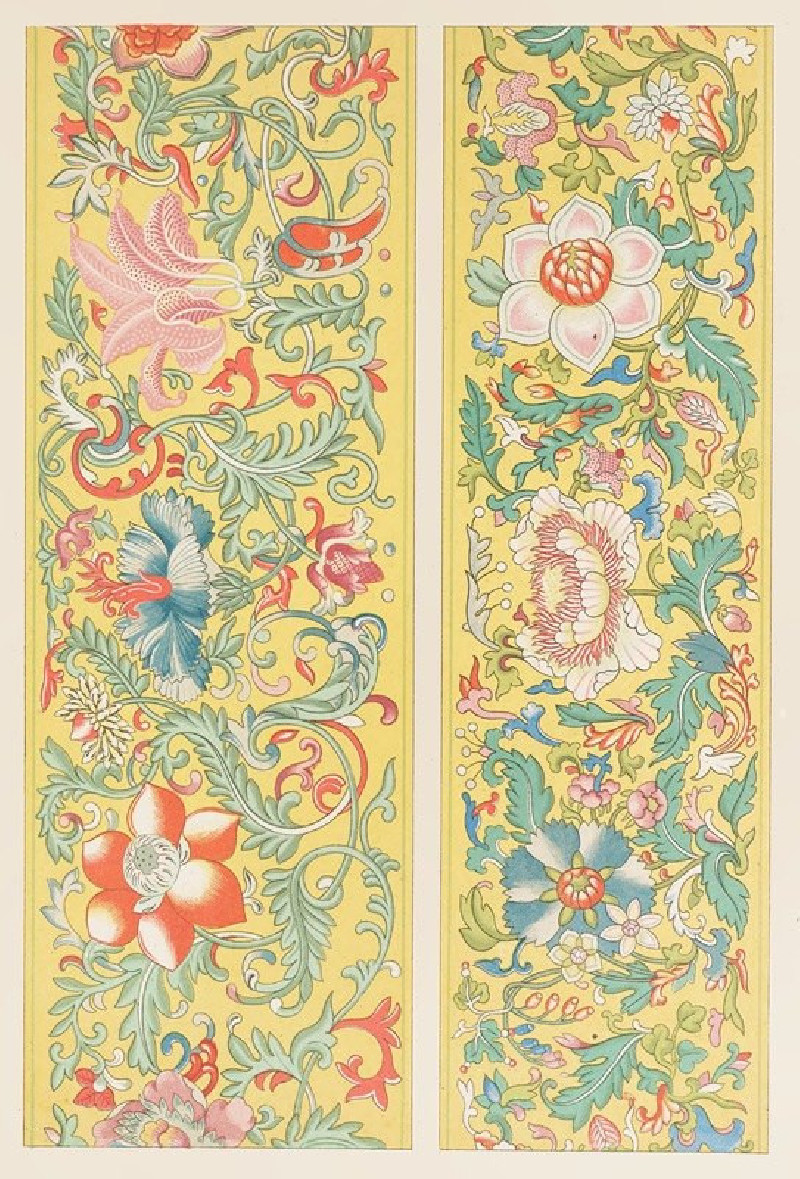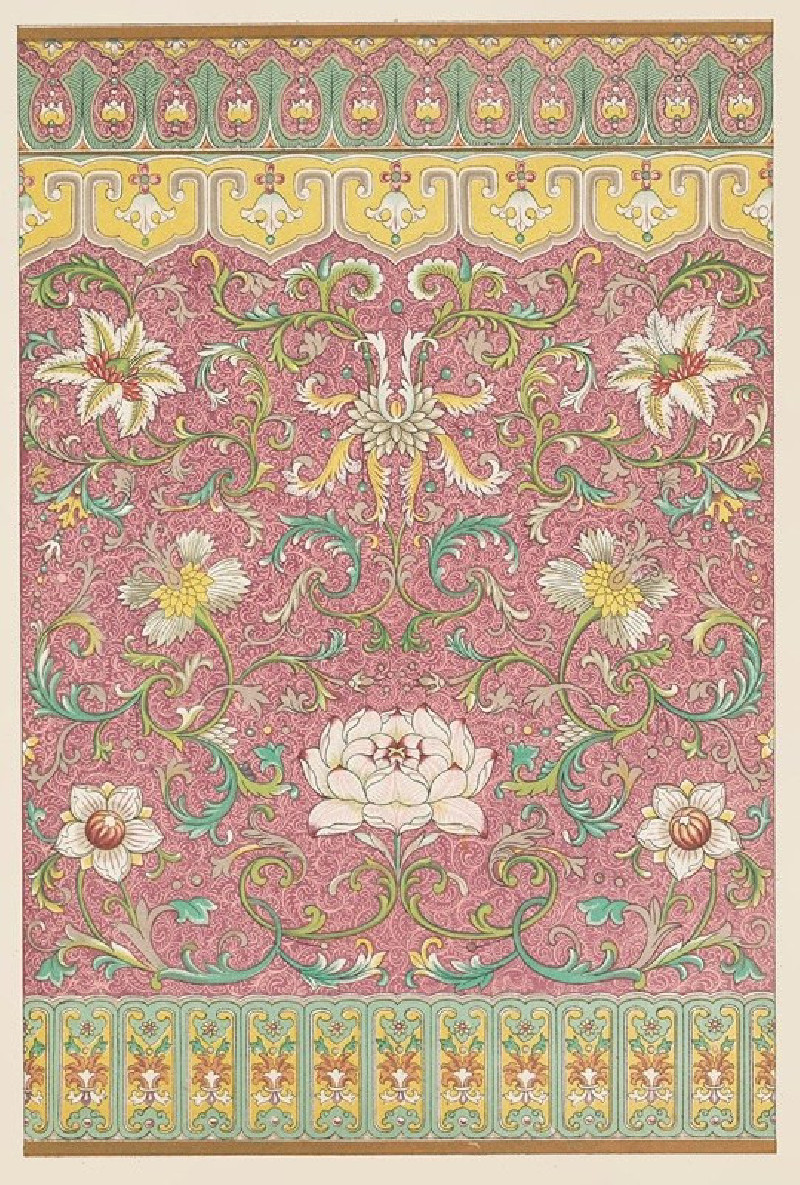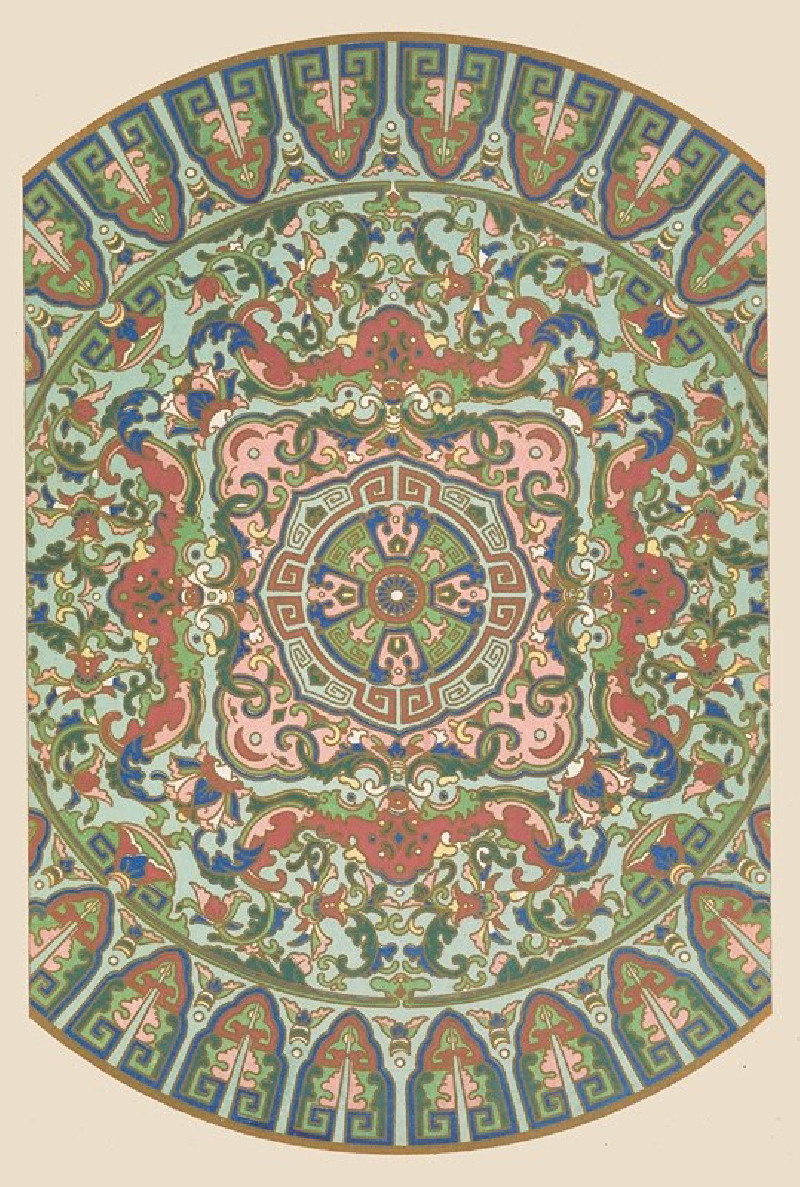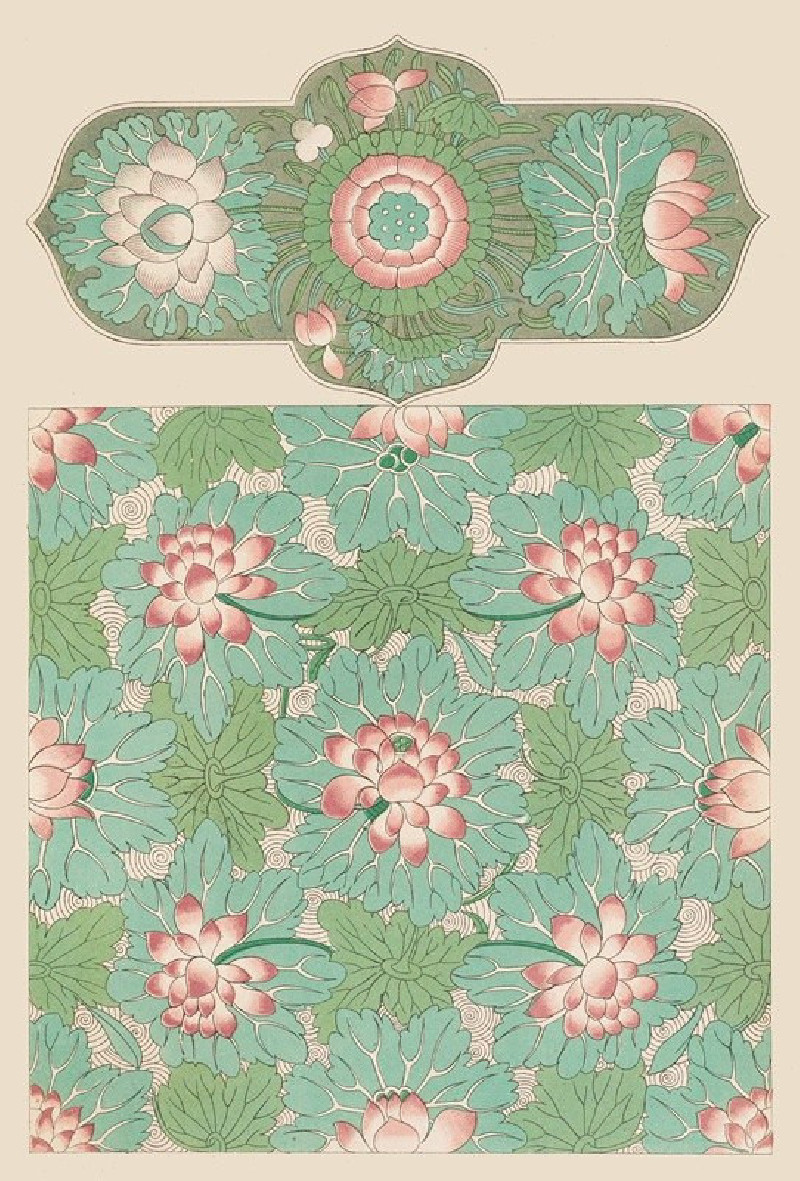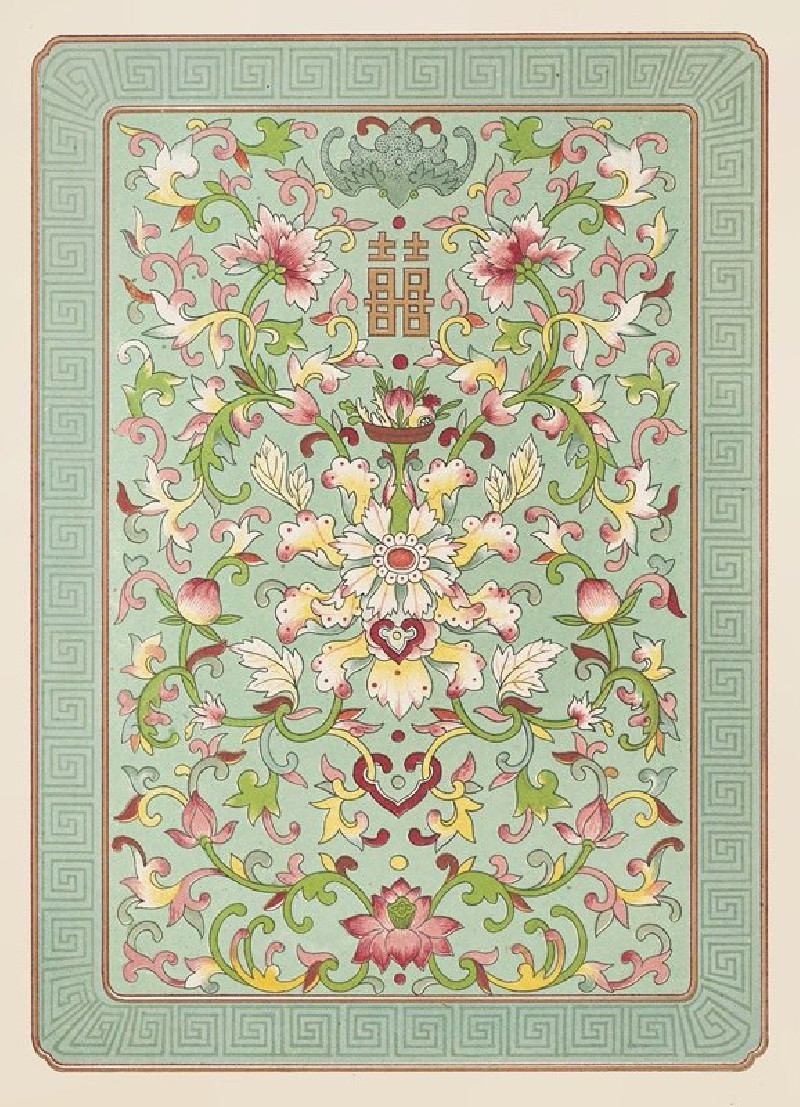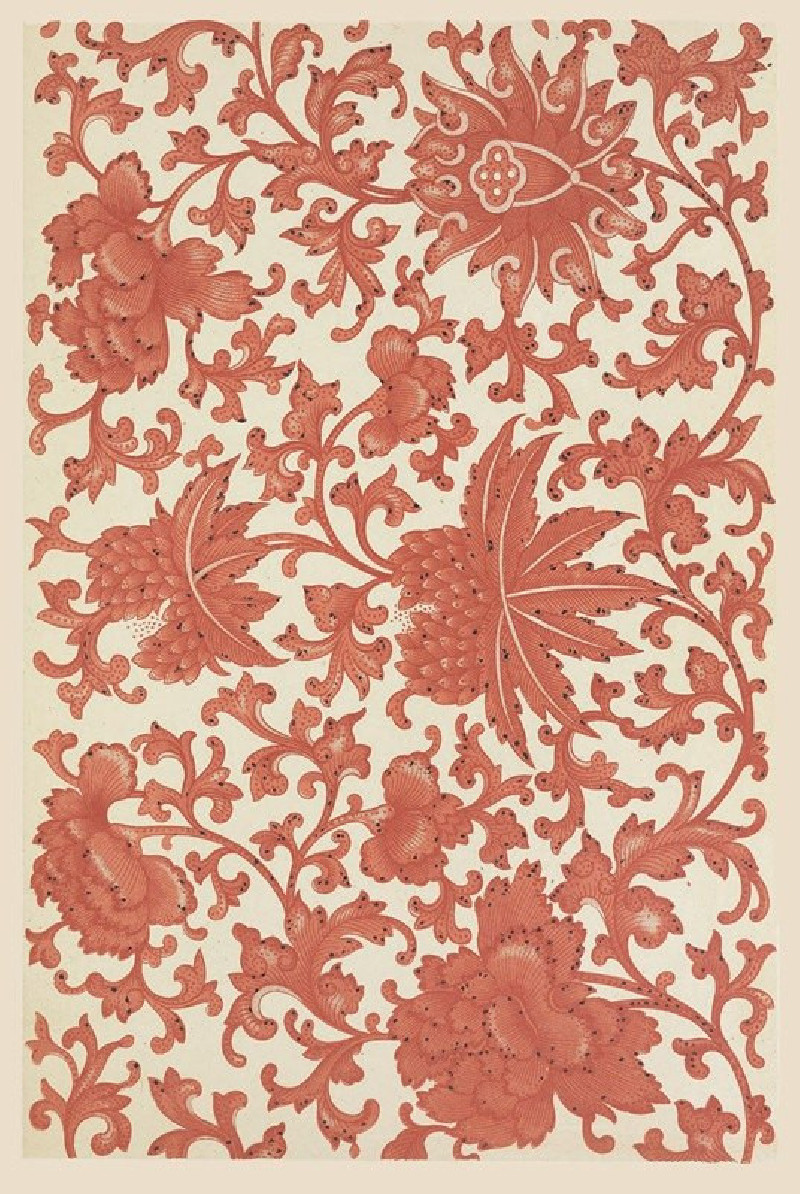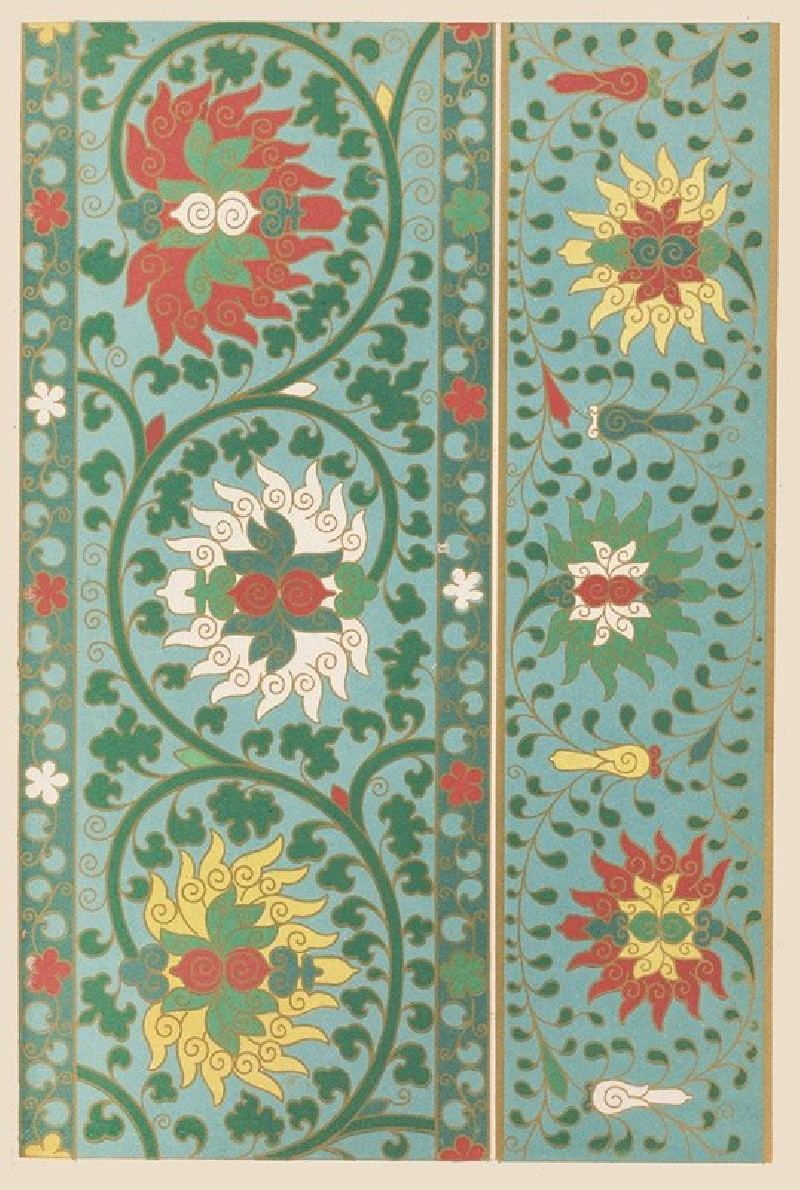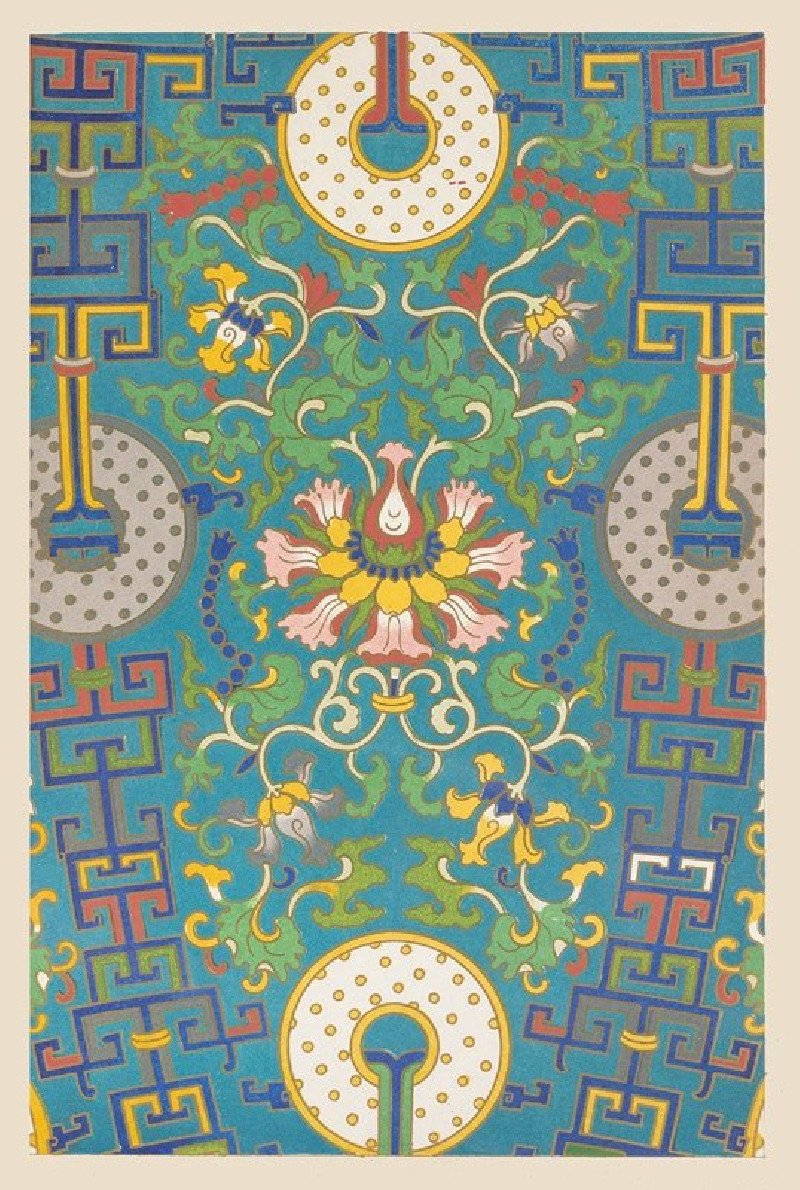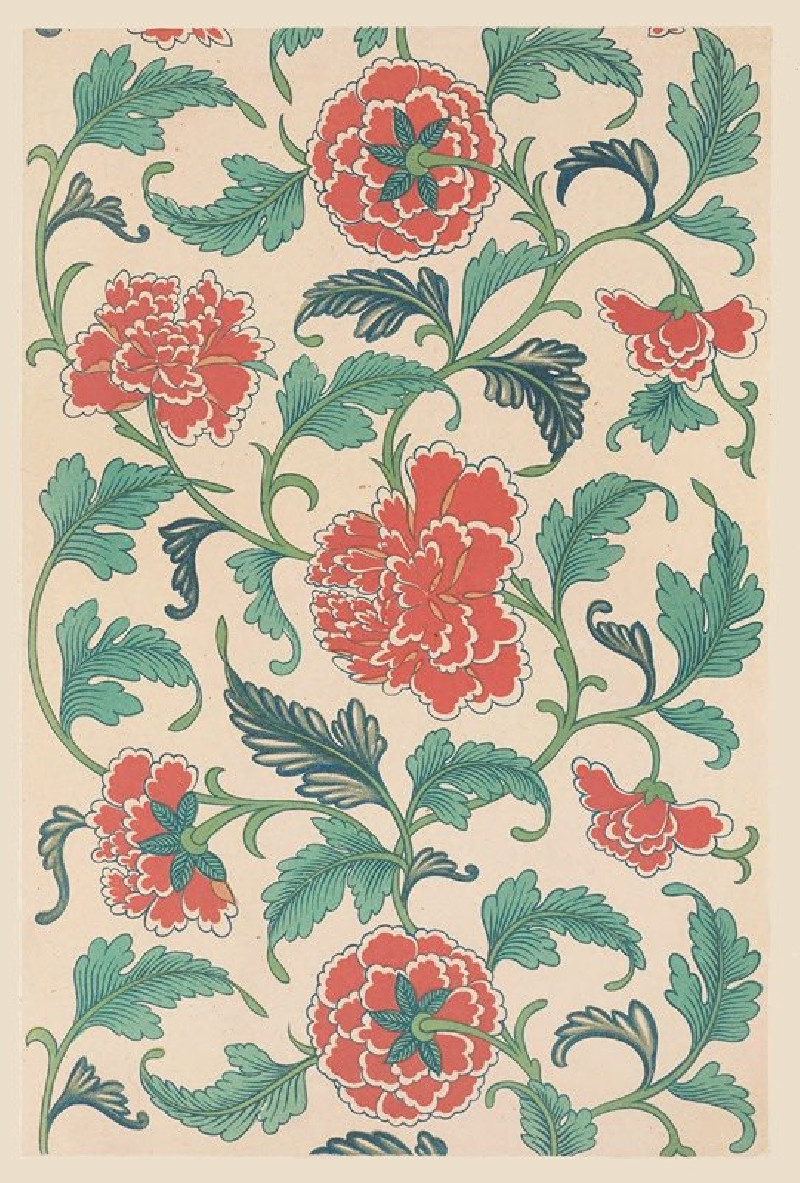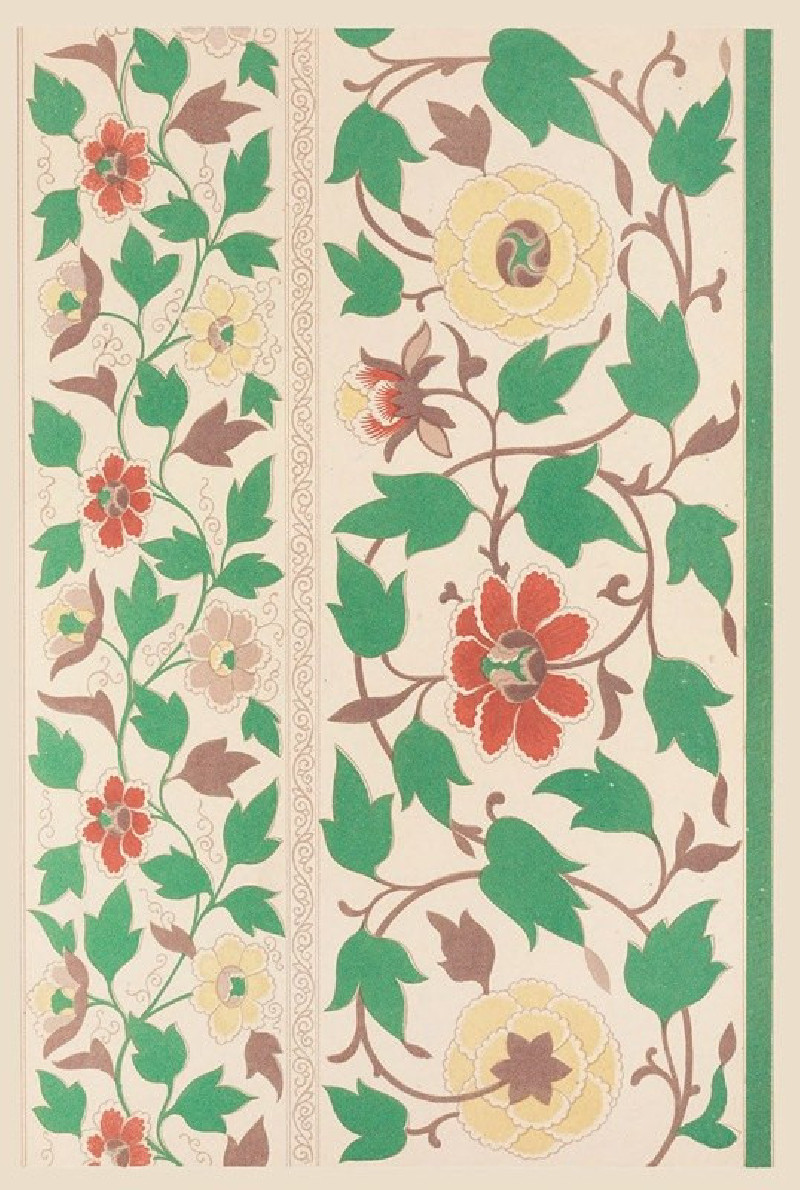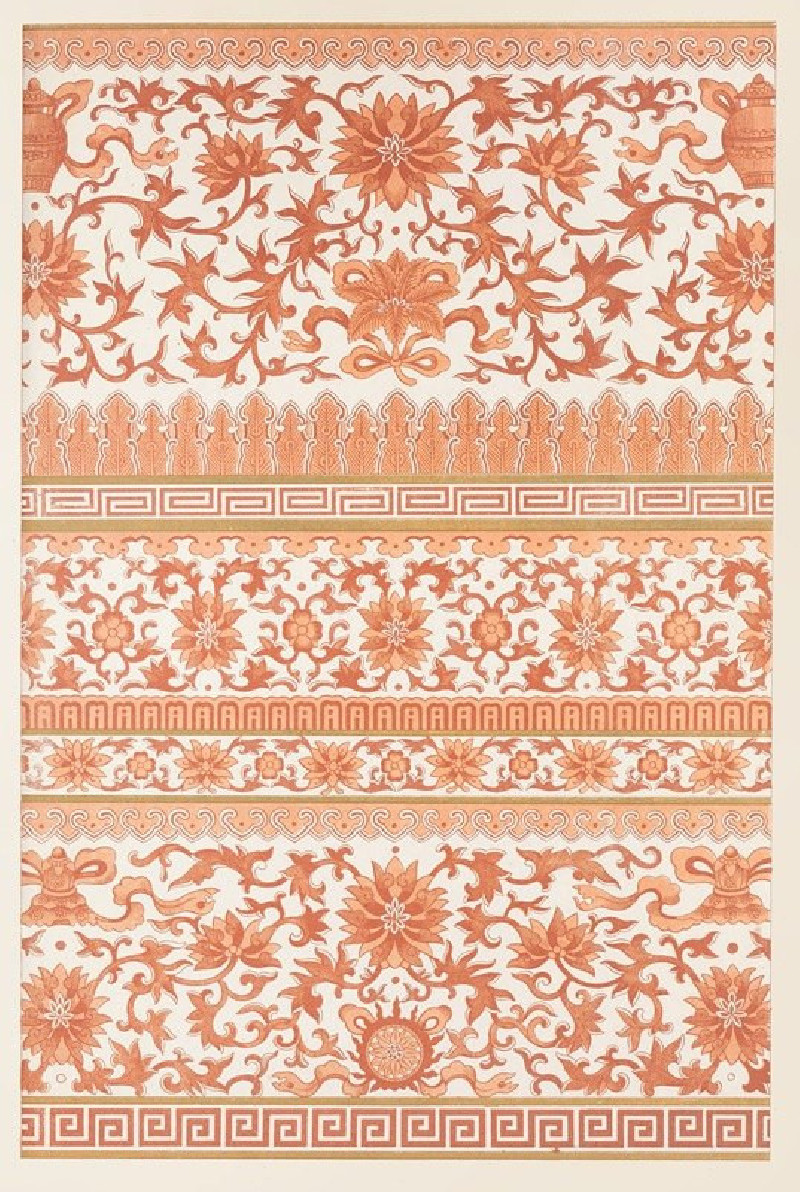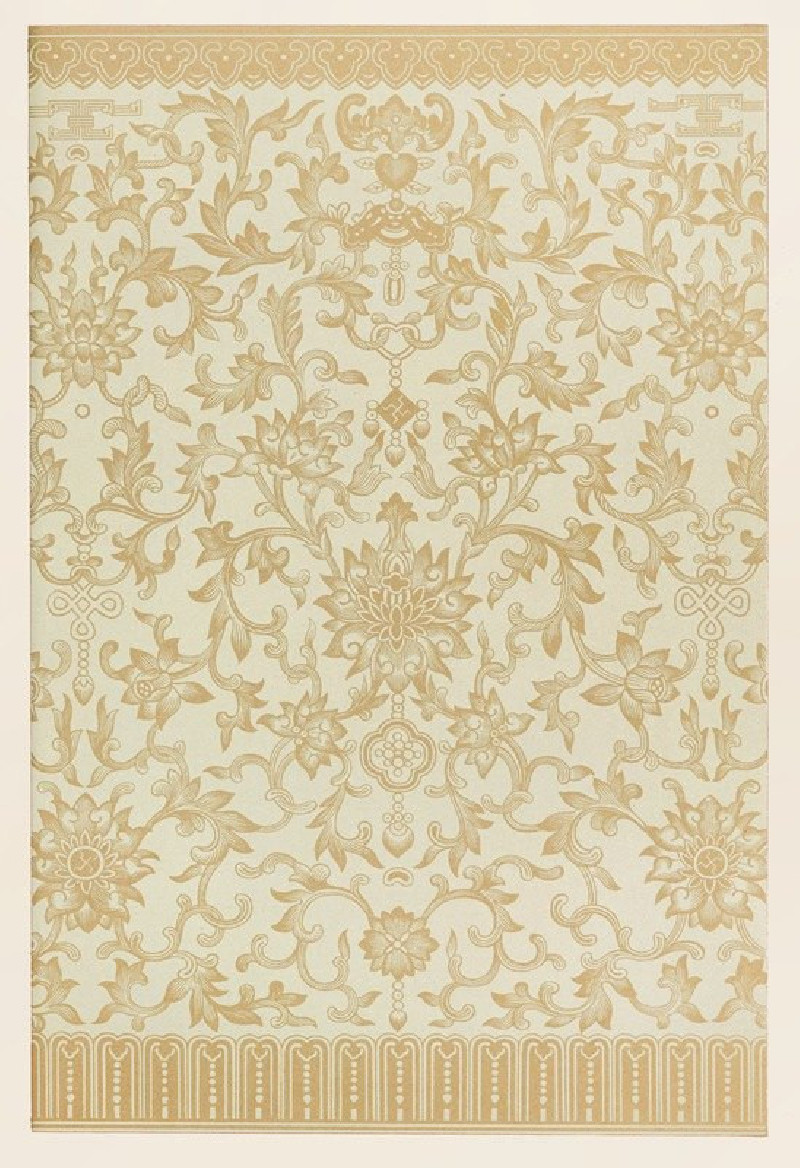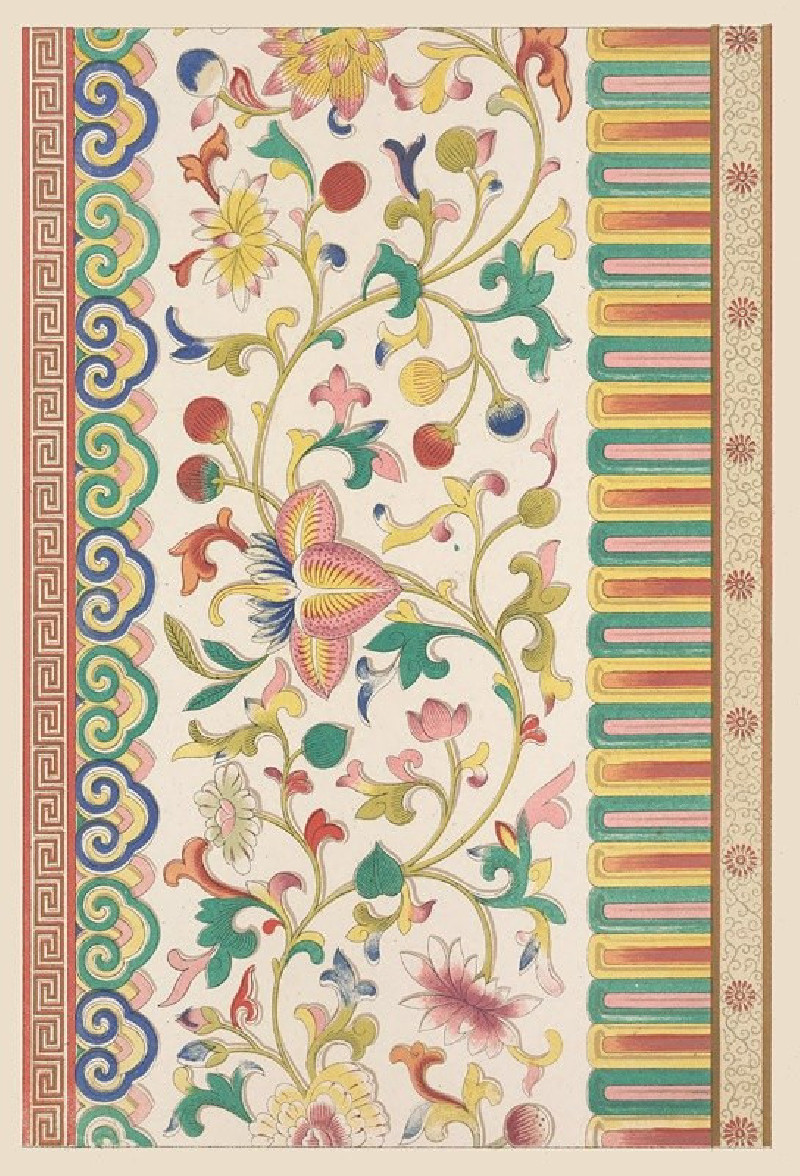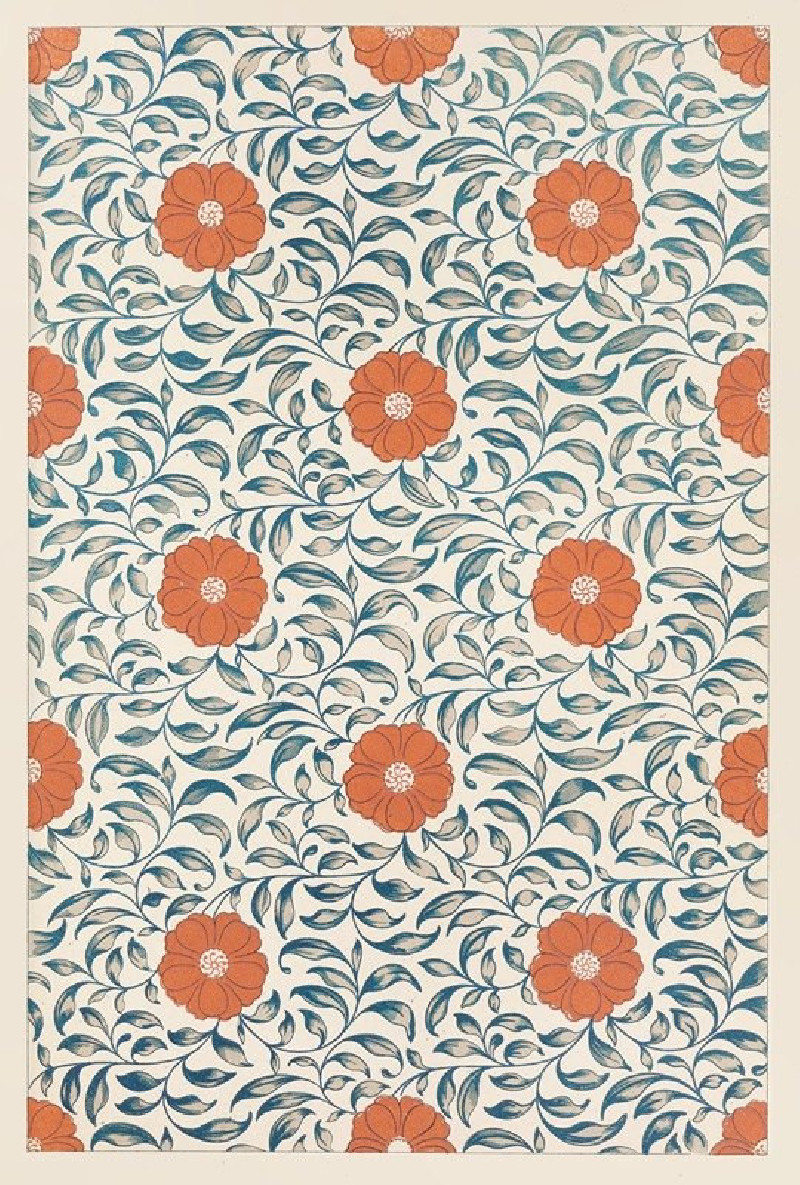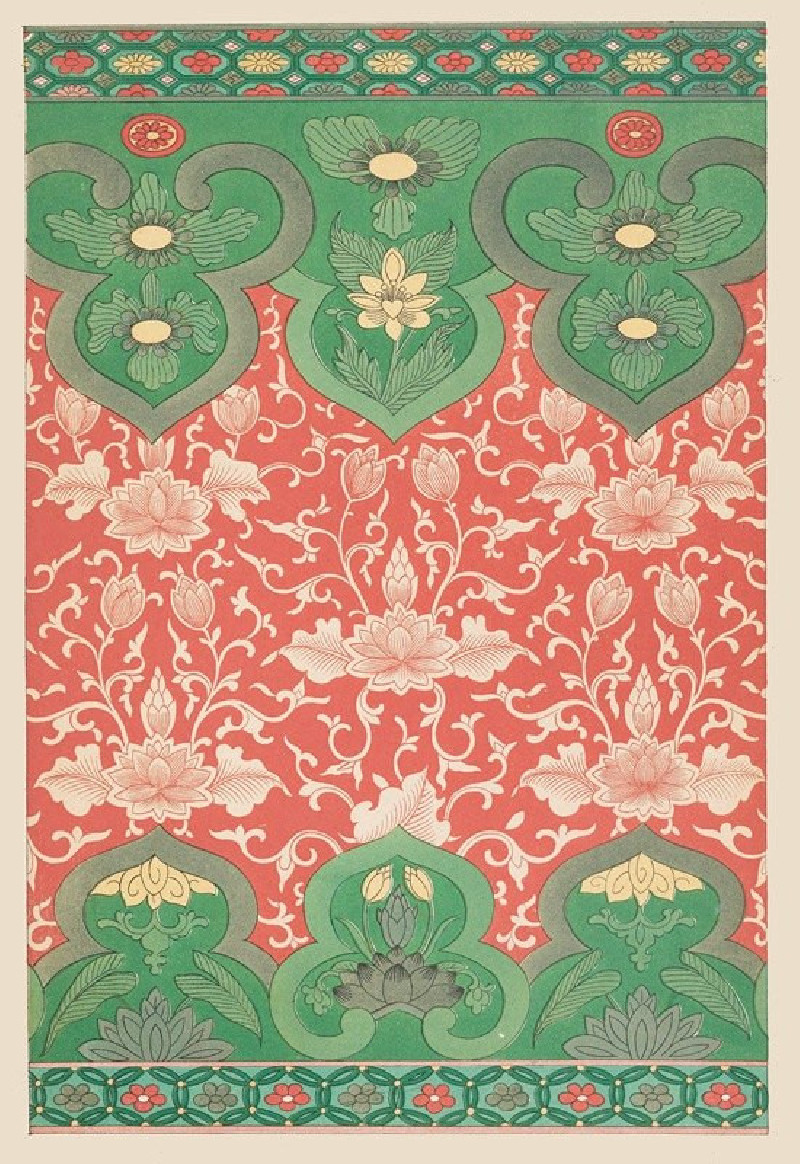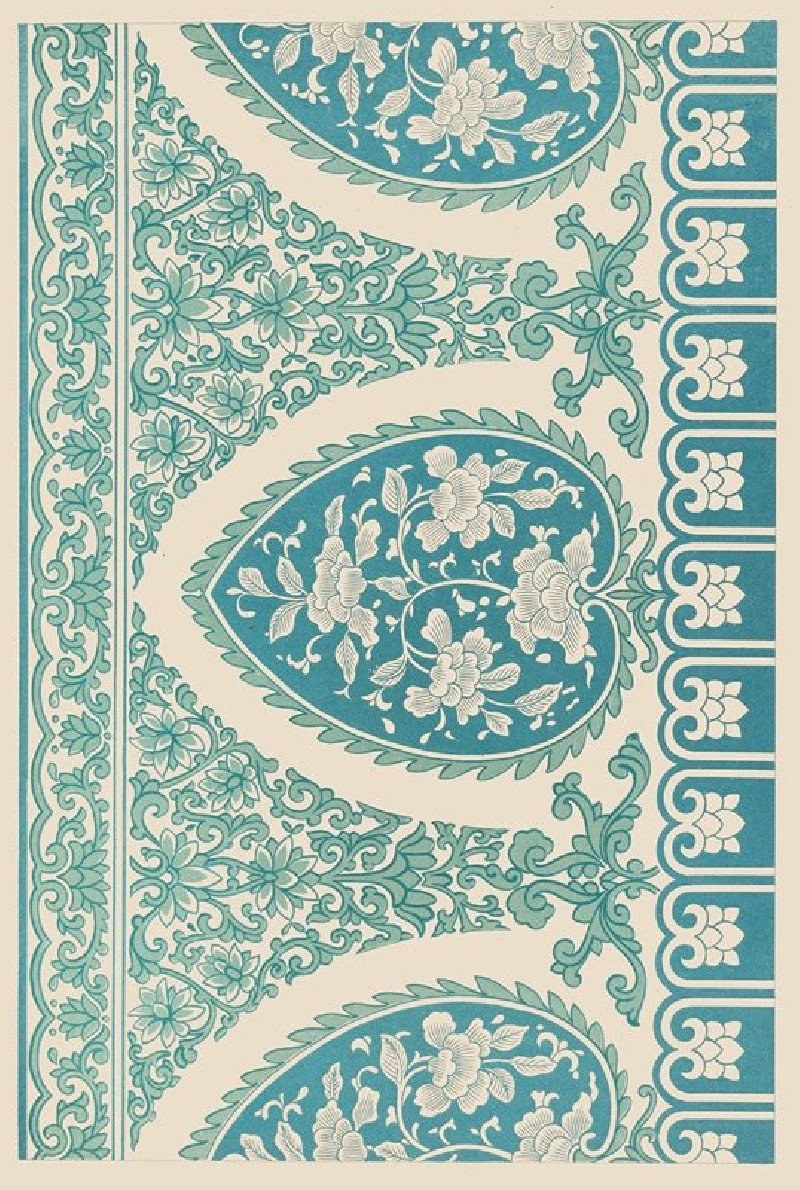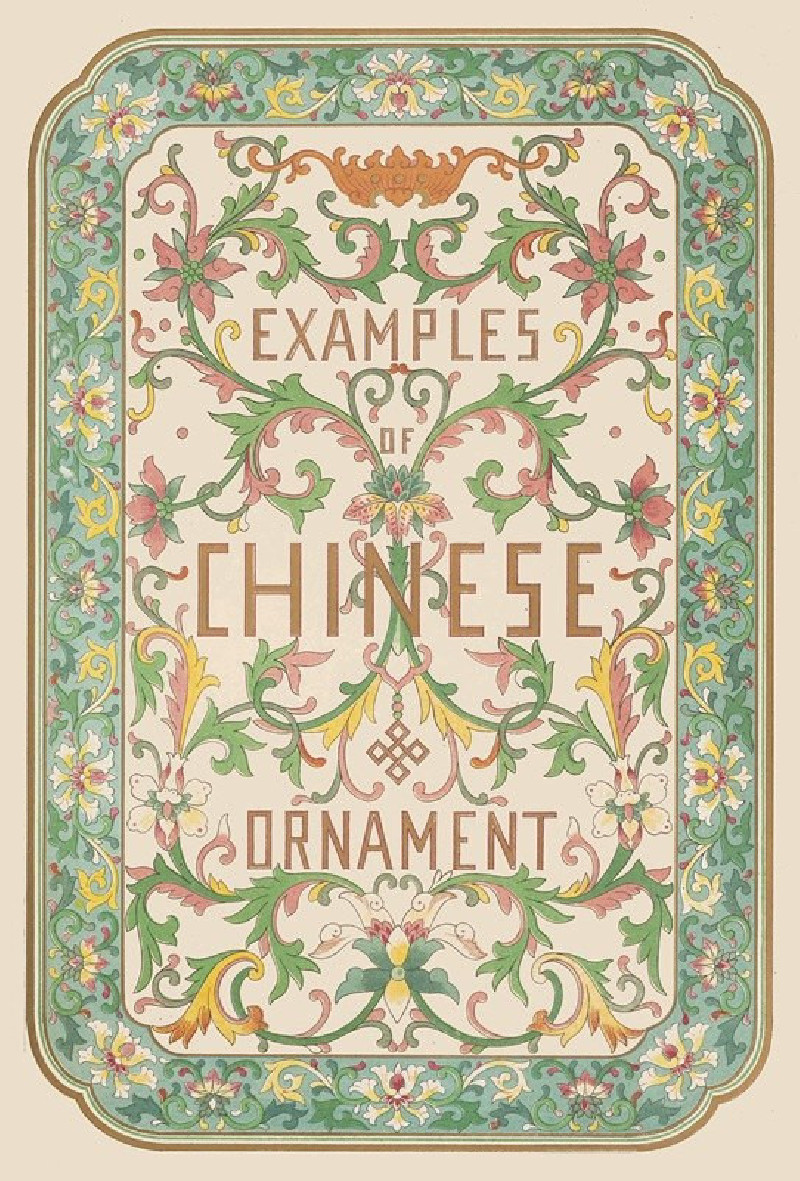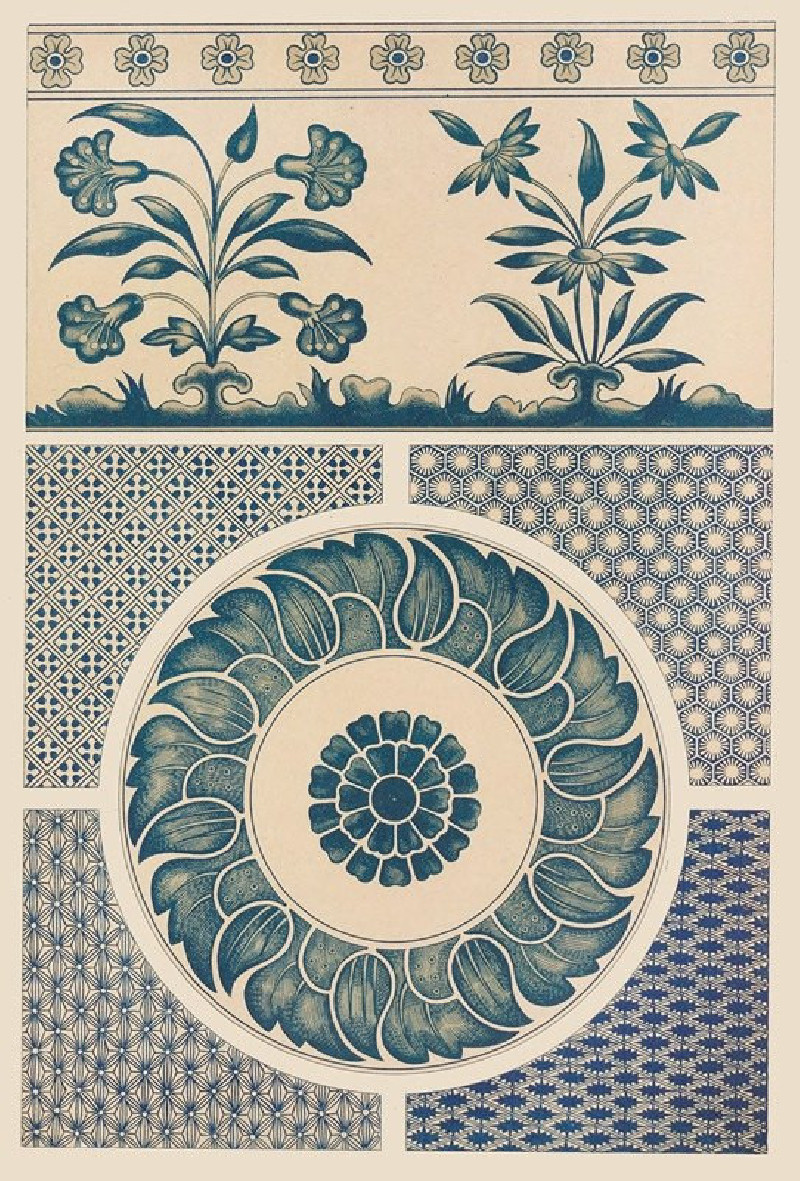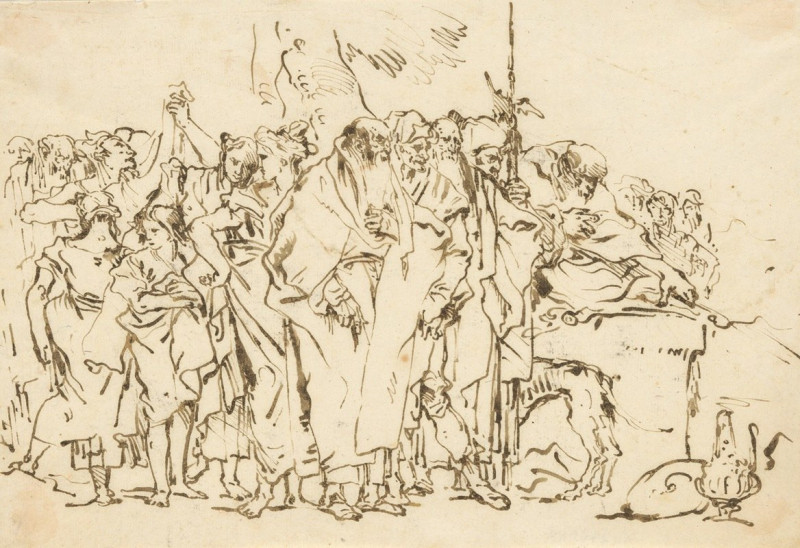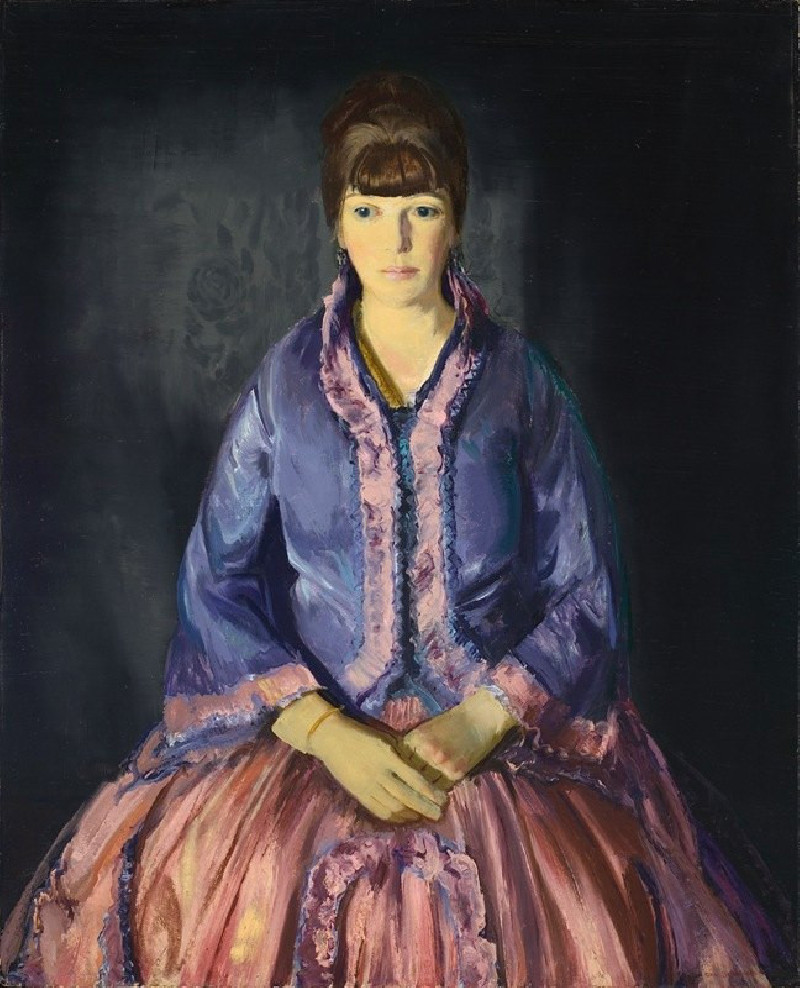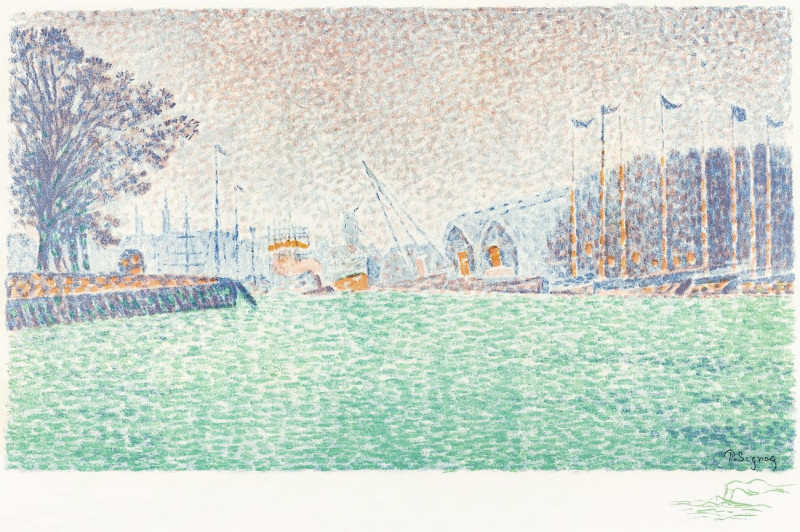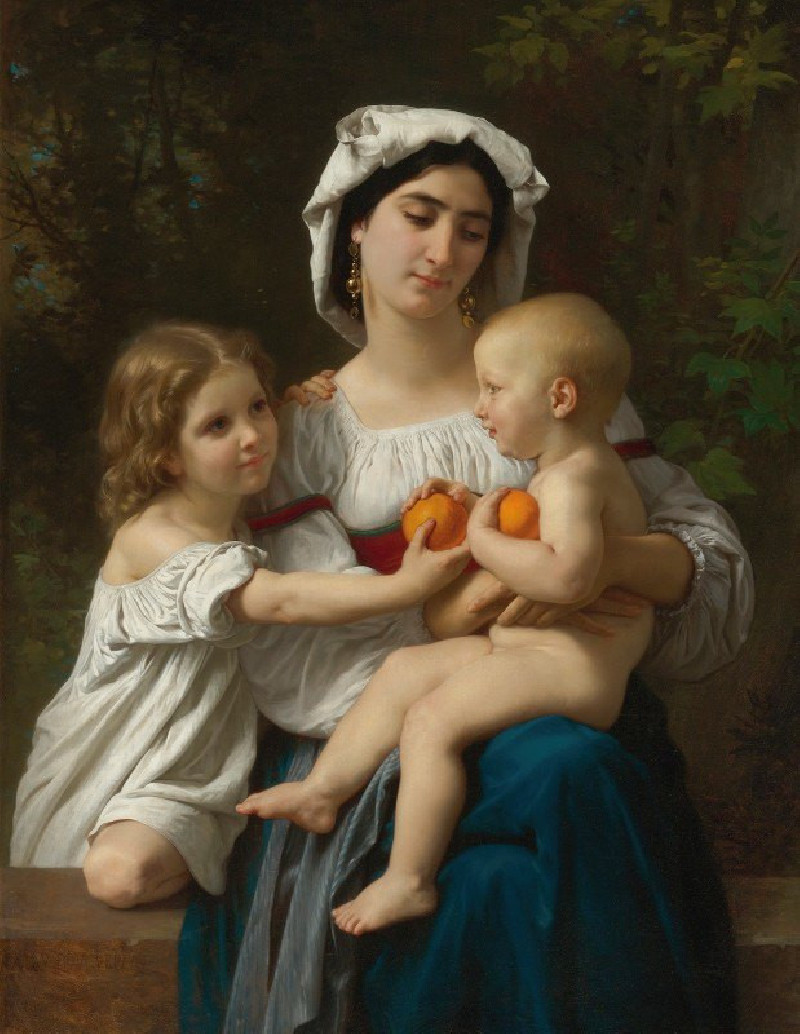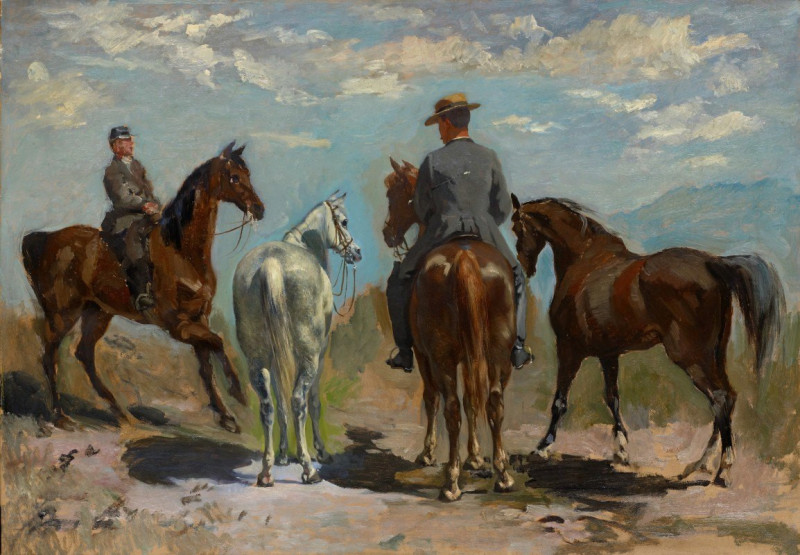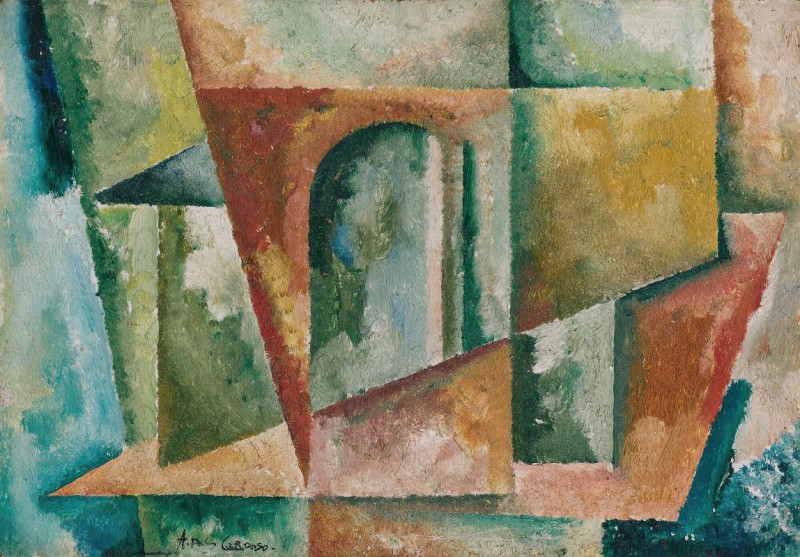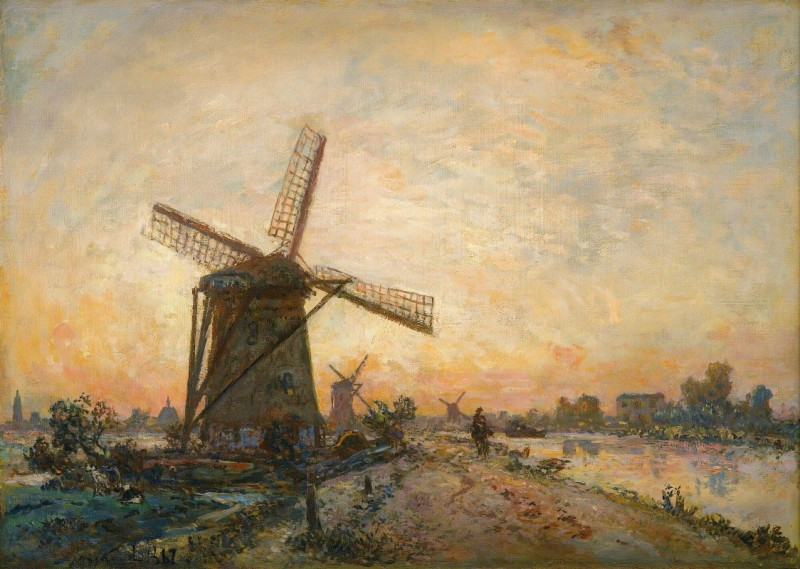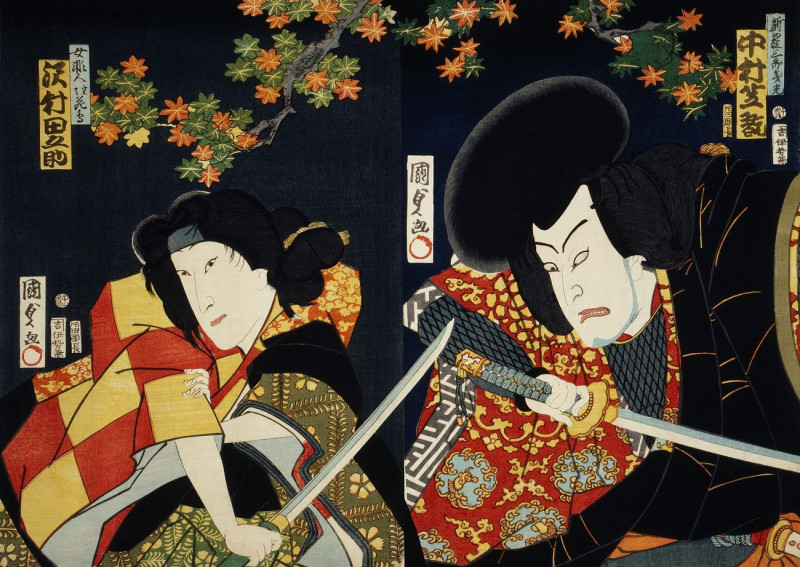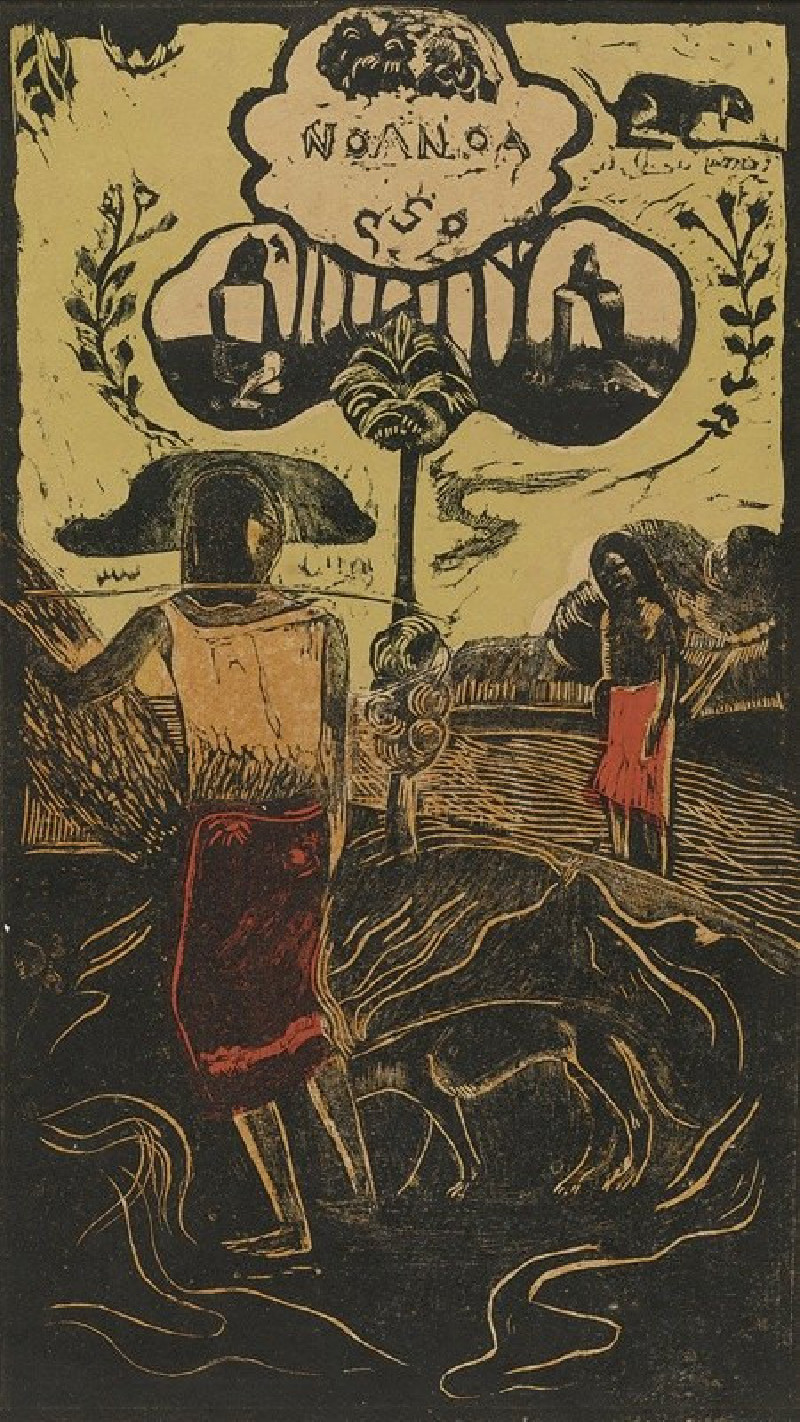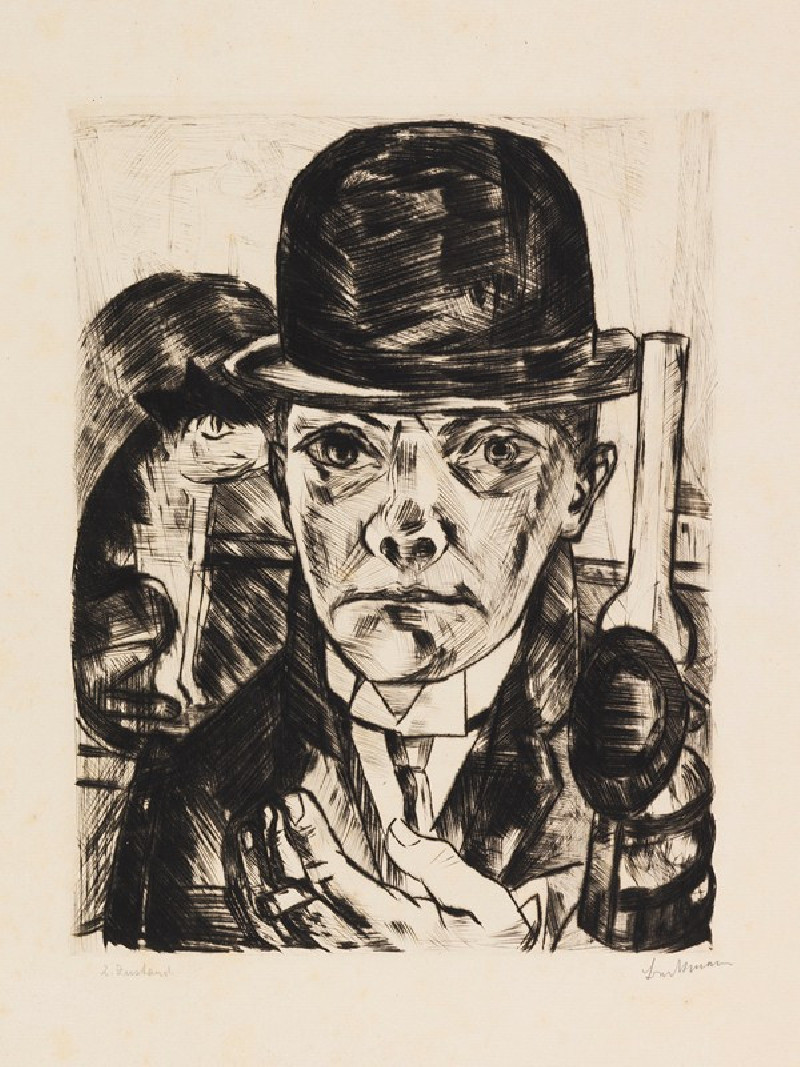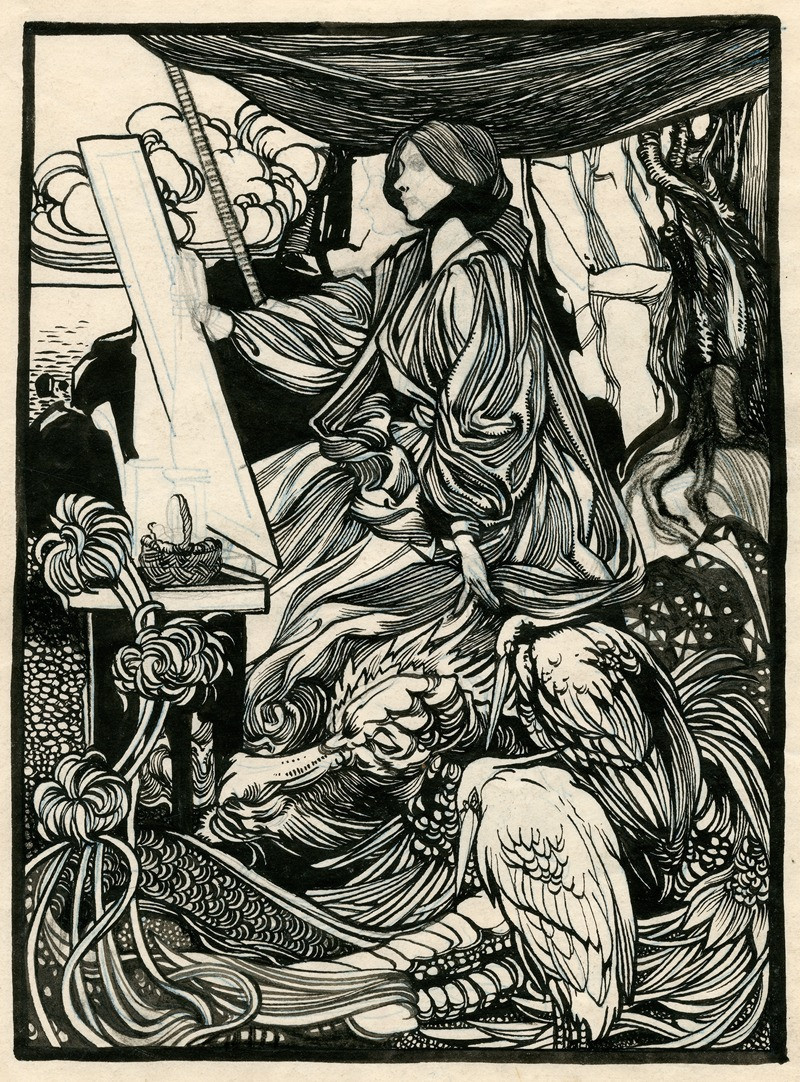Examples of Chinese ornament, Pl.86 (1867)
Technique: Giclée quality print
Recommended by our customers
More about this artwork
Welcome to our exploration of "Examples of Chinese Ornament, Pl.86," a remarkable illustration by the 19th-century British architect and designer Owen Jones. This vibrant artwork, part of his seminal work "The Grammar of Chinese Ornament," is an exquisite representation of Chinese decorative arts, which Jones studied and presented to the Western audience.This particular plate showcases a mesmerizing array of patterns and motifs that exemplify traditional Chinese ornamental design. The composition is divided into elegant horizontal bands, each detailed with its own unique set of designs. The topmost band displays a series of pendant-like motifs in a pleasing alternation of colors, emphasizing a rhythmical visual experience.Central to the artwork is a lush, intricate pattern of scrolling foliage and stylized florals that weave across the canvas. These elements are rendered in soft greens, pinks, and turquoise, creating a harmonious palette that is pleasing to the eye. This central motif is symmetrical, a typical feature in many traditional Chinese designs, symbolizing balance and harmony.Below, the design transitions into a more structured layout featuring iconic, vase-like figures that are also balanced symmetrically. These motifs are a nod to the rich tradition of Chinese ceramics and contribute a semblance of cultural narrative to the overall design.Each pattern in the painting is bordered by fine geometric details, adding to the structural integrity of the visual composition. The use of repetitive shapes and the interplay of color highlight Jones's profound understanding and appreciation of Chinese ornamentation.This painting is not only a feast for the eyes but also a testament to Owen Jones's dedication to studying and educating on the principles of design from diverse cultures.
Delivery
Returns
Owen Jones was an English-born Welsh architect. A versatile architect and designer, he was also one of the most influential design theorists of the nineteenth century. He helped pioneer modern colour theory, and his theories on flat patterning and ornament still resonate with contemporary designers today.

